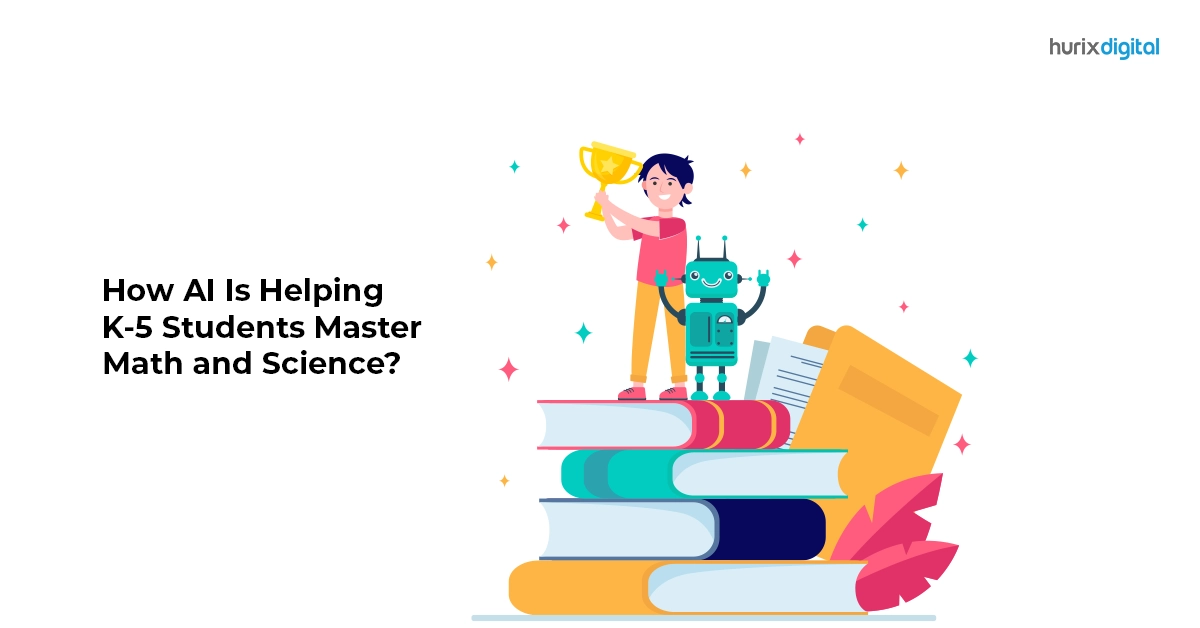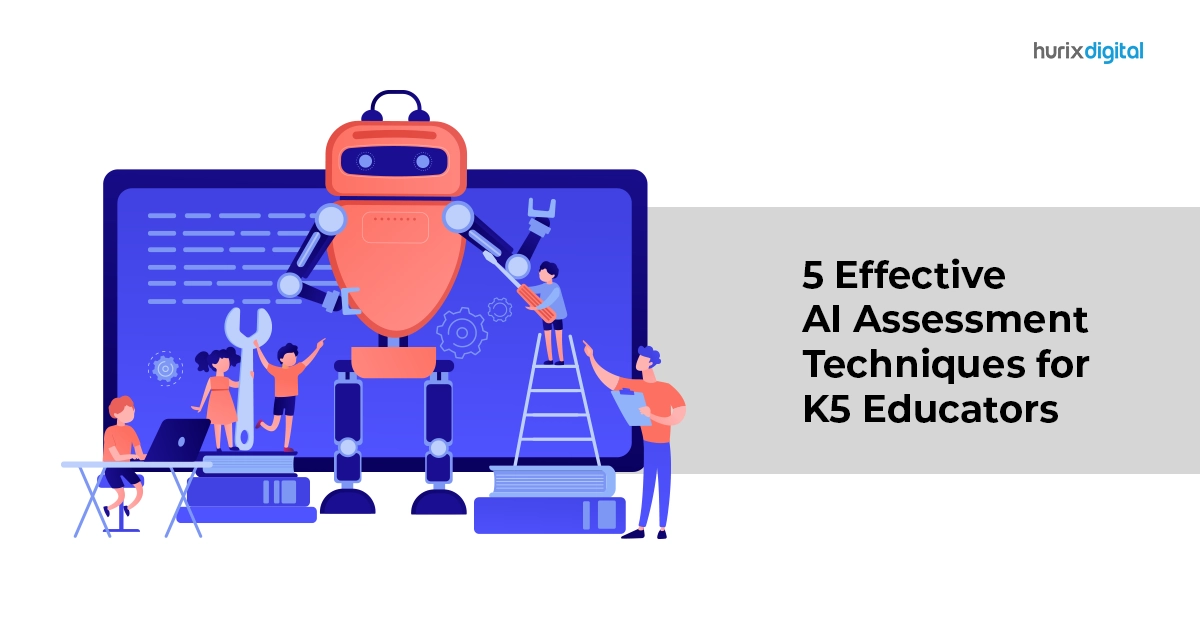Summary
This article outlines the impacts, ongoing trends, benefits, and transformations of technological solutions for K5 education.
K5 education is the period of receiving formal education from Kindergarten till Grade 5. The future of education is being drastically revolutionized owing to the tech-based solutions that maximize the cognitive, creative, and logical skills of children in the growing age.
From the advent of AI to the introduction of augmented reality for experiential learning, technology is impacting the way children learn and develop in more ways than you can think of. This article outlines the impacts, ongoing trends, benefits, and transformations of technological solutions for K5 education. Read on to find more!
Table of Contents:
- Ongoing Trends of Tech-Based Solutions in K5 Education
- How Technology Has Changed K5 Education Positively?
- Use of Interactive Whiteboards Creates an Engaging Learning Experience
- Gamification Improves Student Motivation And Focus Level
- Virtual and Augmented Reality Ensures Immersive Learning
- Use of AI in K5 Education Leads to Personalized Learning
- Incorporating Blended Learning Systems Enhances Retention Rate
- Wearable Technology Provides Children with Real-Time Feedback
- Takeaway
Ongoing Trends of Tech-Based Solutions in K5 Education
The estimated value of the global market for AI in education was estimated at USD 1.82 billion in 2021 and is projected to increase at a CAGR of 36.0% from 2022 to 2030.
The requirement for artificial intelligence (AI) in education is being fueled by factors like rising investments in AI and EdTech by the public and private sectors, as well as rising educational content usage.
Additionally, at a predicted CAGR of 18.3%, the size of the worldwide edtech and smart classroom market is expected to increase from $133.55 billion in 2023 to $433.17 billion by 2030.
How Technology Has Changed K5 Education Positively?
While various e-learning solutions are paving the way for a new era of creative K5 education, there is more in store for a promising future.
Technology has transformed education, rendering it more interesting, effective, and accessible for both students and teachers thanks to innovations like the following-
1. Use of Interactive Whiteboards Creates an Engaging Learning Experience
Due to their capacity to improve student learning, smart boards are becoming increasingly prevalent in classrooms. These interactive whiteboards allow teachers to present educational material and involve students in practical learning exercises.
With the aid of interactive multimedia tools, photos, and videos, teachers can enhance conventional teaching techniques to develop an exciting atmosphere for K5 education.
Teachers can add visual aids to their classes and offer interactive learning opportunities using smart boards. They also give students a place to work together on group projects and demonstrations.
Students can interact with the subject matter more experientially and perceptibly if they can move objects around on the board.
2. Gamification Improves Student Motivation And Focus Level
Gamification can drastically alter educational experiences by using the potential of games. By combining game features, prizes, and obstacles, gamified learning improves participation, motivation, and retention.
Compared to traditional learning materials, game-based learning content or blended learning material is more relevant to actual situations. Because gamified content is easily customizable, teachers may give students a unique learning path.
Instilling a sense of responsibility in the learners through even minor components like personalized game avatars or personal leaderboards inspires them to perform better during their educational journey.
Also Read: Know How the Latest Technology in Education Enhances Teaching Methods
3. Virtual Reality and Augmented Reality Ensures Immersive Learning
Virtual Reality (VR) is an excellent pedagogical tool for K5 education. Kids can use VR headsets to engage in immersive learning that additionally stimulates their sense of hearing, sight, and more.
Experiencing real-life scenarios in 3D models increases the retention rate and helps to develop children’s cognitive skills like pattern recognition, information processing, and attention to detail.
The application of augmented reality (AR) engages children’s minds and promotes conversation. Children are more inclined to recall what they have learned when they are emotionally driven.
For example, story-reading AR apps can generate high-level interest in young minds, further improving their vocab and comprehension skills.
Through immersive digital encounters, the application of augmented reality in education creates new e-learning opportunities.
For instance, a teacher can offer the students access to an augmented reality (AR) solar system model that allows them to discover space and planets while being still seated in the classroom.
4. Use of AI in K5 Education Leads to Personalized Learning
AI in education has a significant ability to enhance children’s learning because it can concurrently integrate knowledge from several fields and technology.
Previous research demonstrates that child-computer interactions like gestures, contact, and voice enable kids to access digital material and services. When young children interact with AI-enabled toys or robots, their imaginative abilities, emotions, and literacy-related skills can all advance.
AI algorithms examine a wide range of information about children, including their academic standing, interests, and style of learning. AI then comprehends the strengths and weaknesses of students by using this data and creates a personalized learning trajectory.
Personalized AI learning can change and advance at par with the learners. As you learn, AI algorithms continuously collect data and improve their knowledge of your strengths, limitations, and learning choices.
5. Incorporating Blended Learning Systems Enhances Retention Rate
Blended learning is a way of teaching that integrates traditional classroom approaches with online learning resources and interactive possibilities.
Every learner has a unique learning style and method. Some kids prefer to study just from text, while others favor classes that are incredibly engaging.
This is the main advantage of blended learning in K5 education: it can create customized, intended, and distinct learning routes.
Blended learning allows for the creation of classes that are built on materials particularly tailored to the needs of each learner. Teachers can take advantage of this chance to learn how much the pupils have previously learned and how much more they need to acquire to advance.
In actuality, learning can continue outside of the traditional classroom setting. Students can have access to a wide range of e-learning information, games, quizzes, exercises, and e-books from the comfort of their own space.
6. Wearable Technology Provides Children with Real-Time Feedback
The teaching and learning processes have changed as a result of new advancements in wearable technology, enabling students to engage with knowledge in an engaged, independent, and productive manner.
Wearable technology can encourage children’s creativity and ingenuity as an educational tool while also facilitating simpler and more organic interactions between them and their environment.
Keygloves, virtual reality (VR), smartwatches, e-textiles, Google Glass, and headsets are just a few instances of wearable technology that can be employed in the classroom and beyond.
The usage of these tools can help students improve their teamwork, interaction, problem-solving abilities, and virtual learning skills.
Also Read: Emerging Trends in Education Technology in 2023
Takeaway
Technology in education is playing a bigger role since it engages students through efficient instruction and a huge range of online programs.
The learning process for both students and teachers is changing dramatically as a result of its broad adoption. Tech-based e-learning solutions are helping in the cognitive development of children in their growing years.
If you’re seeking technology solutions to improve K5 education, Get in contact with Hurix Digital. The goal of Hurix Digital’s e-learning solutions is to provide students with the finest e-learning solutions.
To fulfill the specific requirements of each business or student, we offer unique learning pathways as well as material that can be customized as per your choice and requirements.










